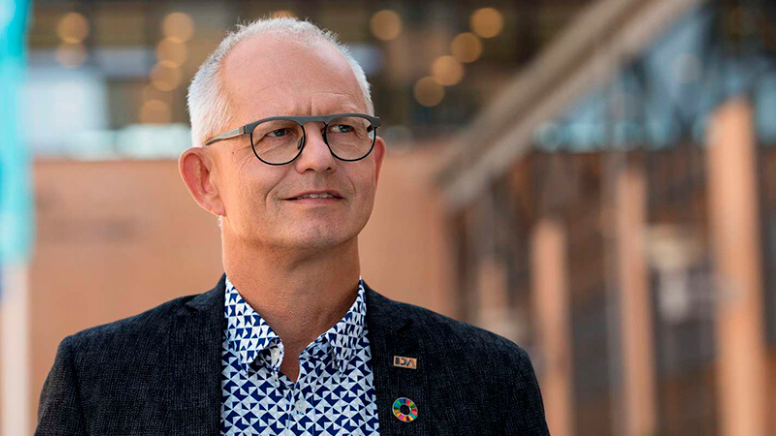Has your union representative made a difference for you and your colleagues? Then you can say thank you by nominating them for the Union Representative of the Year award.
News
We have the technology: Now we need to address the climate change
Sustainable transport is necessary, and a CO2 neutral Denmark in 2040 is the goal. For that reason, IDA is part of the climate alliance 'Broen til fremtiden' (The bridge to the future).

Chairman, Thomas Damkjær Petersen
IDA is part of the climate alliance The bridge to the future, which is working for a CO2-neutral Denmark that obtains its energy only from renewable energy. However, why does a trade union spend time on climate strategy, and should we put more weight on environmental sustainability and less on economic growth?
Chairman Thomas Damkjær explains what IDA will achieve as part of the alliance.
Why should a Trade Union deal with climate change?
Climate policies are generated in the flow between science and social changes. Climate change is altering our natural basis, and the climate change mitigation will also change our work life and industrial production. Precisely work life and production are part of the raison d’être of a trade union.
As a Trade Union, we need to make sure that green and justice become the key concepts in Danish politics from now on. For the past 15 years, we have worked on behalf of our 125,000 members for Danish Energy and climate policy to deliver both climate solutions and quality jobs.
The role of the Trade Union movement is crucial, both to achieve the climate goals that are to secure the lives of generations to come and to ensure that the implementation of the strategy does not leave anyone behind.
'The bridge to the future' wishes to stop new drilling for oil in the North Sea. Wouldn’t it cause a significant reduction of revenue to the Treasury?
'The bridge to the future' first stop is about new drilling. More specifically, the eighth round of concessions, also called the eighth licensing round, is about four oil companies having submitted applications to the government for permission to search for commercially feasible deposits for the extraction of oil and gas in the Danish part of the North Sea.
If the government approves the eighth licensing round, the search for oil and gas in the North Sea will be extended from 2046 to 2055. That is, five years after the date a broad majority in the Danish Parliament decided that Denmark should be fossil-free and climate neutral.
The state treasury raised DKK 8 billion from North Sea oil last year, but this revenue collection has fallen steadily over the past ten years from DKK 36 billion. At the same time, the Danish Ministry of Taxation does not estimate that the new concessions represent nearly as much a revenue as in the past (a total of 1.75 billion, ed.).
How do we ensure that climate change mitigation strategy would not have a negative effect on economic growth?
This is accomplished by following keen solutions. Solutions that help create jobs and increase exports for Denmark. This means that we create better conditions for offshore wind farms, for energy efficiency, for the development of electrofuels (a synthetic fuel stored as carbon-neutral drop-in replacement liquid or gas fuels) and other solutions where electricity is the stored energy source. This stored energy can flow into sectors where electricity alone cannot cope with the transition to green economy, such as electrofuels is doing for the aviation industry.
The transition to green economy and sustainable business development are two sides of the same coin. This also entails that more investment for public research will be needed to support the transition.
IDA believes that technological solutions are needed to limit the global temperature rise to 1.5 degrees. Can we rely on technology that has not yet been developed to stop it?
Global CO2 emissions are a complex conjunction of different types of emissions that cross both national and sectoral boundaries. And there will be an opulence of solutions involving both new technology and a lot of political goodwill and legislation.
In IDA's Energy Vision 2050, which was created in a collaboration between Aalborg University and our members, we sustain that most of the technology needed for a green restructuring of the energy system in Denmark is already available. We can still improve wind turbines, solar cells, solar thermal systems and biogas, but this is more about optimization than actual inventions.
However, in some areas new solutions are still needed. This is certainly the case with storage of solar and wind energy. So basically, I do not believe that climate change mitigation needs us to wait for new technology. Technology is constantly evolving and develops as we face new needs, so it is not about waiting for something to be done. It is about setting ambitious goals and providing space and financial investment for development, so we finally can sell these solutions to those who are deliberately failing to act.